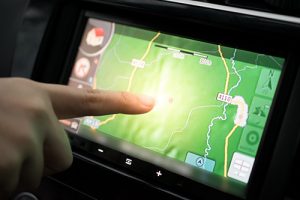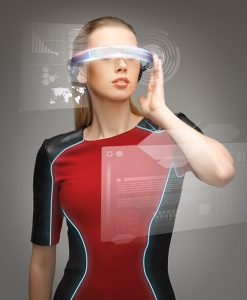 The Power of Technology
The Power of Technology
I have written in the past about business and technology and particularly about the benefits and drawbacks of our current digital world. Our adoption of technology is accelerating and while it can make life more convenient, experts are concerned that it is leaving us virtually connected but personally isolated. In this blog I would like to highlight the power of technology to connect those that would otherwise be isolated.
Reaching Out
I have worked in the technology industry since the very early days of personal computers and have experienced generations of conferencing options. In the beginning there was voice-only conferencing via telephone; then came video broadcasts over large networks or satellite connections, but only to those sitting in large conference rooms. With the advent of personal computers and a build out of networks, videoconferencing came into the home with applications such as Skype, Facebook, Facetime, and Google Hangouts. This is a wonderful development that allows people to connect with each other, even over the miles. My 83-year-old parents are able to Skype with me even though we live 700 miles apart. This gives them a chance to reach out beyond their home for conversation and gives me a chance to reconnect and ensure their well-being.
Protecting
Technology can be used to ensure that you keep track of items such as keys or cell phones or something more important such as little ones or forgetful elders. There are always privacy issues when it comes to tracking people—notably children. However, in many situations those issues are overridden by security concerns. For example, if I am backpacking alone in the wilderness, I can carry a tracking device that reports my location and is visible to my family and friends. This same technology also allows loved ones to track elderly parents. For example, a small GPS tracker from Trackimo can display the whereabouts of those suffering from dementia and can alert caregivers and family members if they get lost. Technology can protect those that are vulnerable.
Collaborating
Technology can connect us with others for the purposes of collaboration. If I wanted to work with someone or a group of people on a book, an academic paper, or an art project, there are several collaboration technologies that let us create something new and meaningful. These include document and project collaboration tools such as Huddle and the Google suite of tools like docs and sheets. There are also tools such as Redpen and Mural for collaborating on visual projects. These tools foster idea sharing from large screens or mobile platforms. No longer are we limited to pursuing the creative process alone but can now easily reach out and work with others to create something meaningful.
Traveling Locally
Technology has and will continue to improve our abilities to travel, especially locally. Metro and bus stops now often display arrival times for the next train or bus. Additional mobile apps do the same across multiple travel systems. Lyft and Uber are examples of ride services for those that don’t have a car or cannot (or choose not to) drive. Putting a twist on the traditional taxi-cab model, these companies use GPS and mobile apps to engage potential customers and employ drivers that use their own personal cars. This increases the accuracy of the pick-up and drop-off processes and helps bring down the price of the ride by lowering overhead costs. With the introduction of autonomous vehicles, it will be possible to arrange the same rides minus an actual driver. These are a few ways that technology is expanding the possibility and affordability of local travel.
Thoughts
Technology can be empowering and transforming, but it can also be isolating. I believe that the difference lies in how we choose to use it. We can use technology to improve our lives and bring us together or allow it to leave us frustrated. The result is up to us. Technology has created great tools that can help us connect with others at a distance, but it is also valuable to connect with others across a dinner table, on a bus, or in a checkout line. In our modern world we can comfortably do both. Let me know your thoughts.
This is my 237th and final blog post. I appreciate all who have taken the time to read and ponder my thoughts. I have learned a lot from researching technology and business trends. This process has led me to create and present two academic papers on the ethical responsibilities of creating emerging technologies. I am confident that the future is bright as we work together on creative solutions to improve our lives. Thank you.
 About Kelly Brown
About Kelly Brown
Kelly Brown is an IT professional and assistant professor of practice for the UO Applied Information Management Master’s Degree Program. He writes about IT and business topics that keep him up at night.











